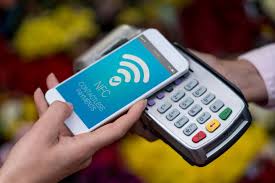
Unlocking Connectivity: The Power of NFC Technology
The Power of NFC Technology: Revolutionizing Connectivity
In today’s fast-paced digital world, Near Field Communication (NFC) technology is playing a pivotal role in revolutionizing connectivity. NFC is a short-range wireless communication technology that enables data exchange between devices when they are brought close together. This innovative technology is transforming the way we interact with our devices and the world around us.
One of the key advantages of NFC technology is its convenience. With just a simple tap or wave, users can transfer information, make payments, access digital content, and much more. This seamless connectivity has made NFC popular in various industries, including retail, transportation, healthcare, and entertainment.
Mobile payment systems like Apple Pay and Google Pay leverage NFC technology to enable secure transactions without the need for physical cards. By simply tapping their smartphones on NFC-enabled terminals, users can make quick and contactless payments, enhancing both convenience and security.
In addition to payments, NFC technology is also being used for smart access control systems. From keyless entry in hotels to secure authentication in workplaces, NFC-enabled devices are simplifying access management while enhancing security measures.
Moreover, NFC tags are being utilized in marketing campaigns to deliver interactive experiences to consumers. By placing NFC tags on posters, products, or promotional materials, businesses can provide additional product information, discounts, or links to websites with just a tap from a smartphone.
As the Internet of Things (IoT) continues to expand, NFC technology is becoming increasingly essential for seamless device-to-device communication. Smart homes equipped with NFC-enabled devices allow users to control lighting, temperature, security systems, and more with a simple touch or gesture.
Overall, NFC technology is reshaping the way we connect with our devices and surroundings. Its versatility and ease of use make it a valuable tool for enhancing user experiences across various applications. As we continue to embrace the era of digital transformation, NFC technology stands out as a powerful enabler of connectivity and innovation.
Understanding NFC Technology: Compatibility, Functionality, and Applications
- Do all phones have NFC?
- Is NFC a Bluetooth?
- Can I install NFC on my phone?
- What is NFC technology used for?
Do all phones have NFC?
The presence of NFC technology in smartphones varies depending on the model and manufacturer. While many modern smartphones come equipped with NFC capabilities, not all phones have this feature. It is important for consumers to check the specifications of their device to determine if it supports NFC functionality. Typically, NFC-enabled smartphones allow users to enjoy the convenience of contactless payments, data transfer, and other interactive experiences. If NFC compatibility is a priority for users, they should ensure that their smartphone is equipped with this technology before making a purchase.
Is NFC a Bluetooth?
NFC (Near Field Communication) is not Bluetooth, although they are both wireless communication technologies. While Bluetooth is designed for longer-range data exchange (up to 100 meters), NFC operates over very short distances (typically within a few centimeters). NFC is often used for quick and secure data transfer by simply bringing two devices close together, such as making contactless payments or sharing information. In contrast, Bluetooth is more commonly used for connecting devices over greater distances, like pairing a smartphone with wireless headphones or speakers. Despite their differences, both NFC and Bluetooth play important roles in enabling wireless connectivity in various applications and devices.
Can I install NFC on my phone?
Many modern smartphones come equipped with NFC (Near Field Communication) technology as a standard feature. If your phone does not have NFC capabilities built-in, unfortunately, it is not possible to install NFC on your device through software updates or third-party applications. NFC requires specific hardware components to function properly, such as an NFC chip and antenna. Therefore, if your phone does not have NFC support out of the box, you may need to consider upgrading to a newer model that includes this convenient and versatile technology for seamless connectivity and interactions with other NFC-enabled devices.
What is NFC technology used for?
Near Field Communication (NFC) technology is widely used for a variety of applications due to its convenience and versatility. One of the primary uses of NFC technology is for mobile payments, allowing users to make secure transactions by simply tapping their smartphones on NFC-enabled terminals. Additionally, NFC technology is utilized for smart access control systems, enabling keyless entry in hotels, secure authentication in workplaces, and streamlined access management. Furthermore, NFC tags are commonly employed in marketing campaigns to provide interactive experiences to consumers, offering additional product information, discounts, or links to websites with just a tap from a smartphone. Overall, NFC technology serves as a seamless and efficient solution for data exchange, connectivity, and enhancing user experiences across various industries and applications.

